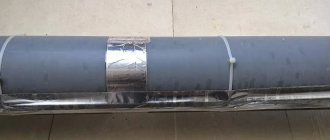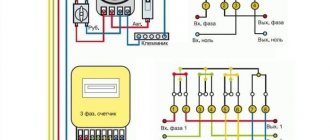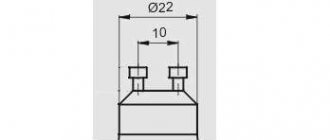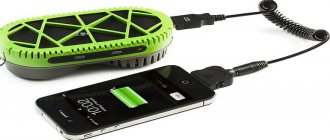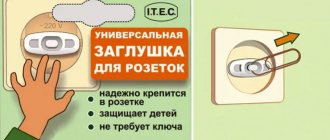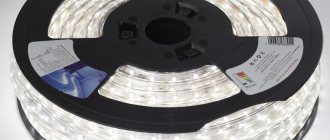Thanks to them, you can easily turn on or off the heaters or air conditioner in your home on a schedule. Imagine that in early autumn, when the heating season has not yet begun, you come home from work, and your apartment is already warm and comfortable.
Sockets with a timer are indispensable if you want to create the impression for strangers that someone is present in your house. The lighting and TV will turn on independently in the evening and then turn off. And at this time you yourself will be far from home. This sometimes helps against uninvited guests.
Sockets with a timer are divided into 2 types:
- mechanical
- electronic
What is a timer socket
With the advent of smart homes, more and more people are thinking about automating their homes and increasing their level of comfort. And if you don’t have the money for a full-fledged system yet, you can start small and buy an outlet with a timer.
A special feature of the device is the ability to supply and remove voltage from devices automatically. The operating principle is partly similar to smart plugs, but still has significant differences.
After purchase and installation, you can set the on/off time and entrust the operation to automation.
Externally, a socket with a timer is a regular plug connector and an additional mechanism that is mounted inside the case and provides a time delay.
Depending on the model type, the surface may have a mechanical lever or buttons with an electronic display.
A guide on how to make a device with a mode setting for several hours with your own hands
If creating a programmable socket with a timer requires not only knowledge of electrical engineering, but also microcontroller programming skills, then making a device with your own hands that sets the mode for several hours is quite possible. Below is a schematic diagram of such a device.
Socket circuit with analog timer
Designations in the figure:
- A, B – connectors for connecting the load;
- comparator DA1 – KR142EN19;
- resistors: R1 – 10 kOhm, R2, R3 – 1 mOhm;
- capacitors: C1 – 1 µF 400V, C2 – 1000 µF 16V, C3 – 100 µF 16V;
- diodes: VD1, VD2 – 1N4005, VD3 – D815E, VD4 – KD521A;
- K1 – any relay with an operating current of 50mA and a 12V winding, respectively, its contacts must be designed for switching voltage 220V;
- SB1, SB1-2 – power button;
- K1-1 – relay contacts K1.
The figure below shows an example of the circuit board layout for this device.
PCB image
The operating principle of the device is as follows:
When you press the power button, contacts SB1 and SB1-2 close, voltage is supplied to the coil of relay K1, when it is triggered, contacts K1-1 close, thereby providing voltage, regardless of pressing the power button. From this moment, capacitor C3 begins to discharge (through a chain of resistors R1 and R2). As soon as the current drops below the threshold value, relay K1 is switched off and the load connected to pins A and B is disconnected.
The shutdown time is regulated by variable resistor R2; if you need to increase it, you can install a larger capacitor C3. The device does not require configuration; it can be used immediately after assembly.
Of course, the functionality of this device will be significantly inferior to such models as EL-01 or EL-02 from Robiton (Germany), but on the other hand, it does not require fine tuning and can be used even in the cold, for example, an outdoor socket in a protective case.
In addition, the cost of a homemade socket with a timer (automatic shutdown function) will be significantly less than the price of a finished product with digital control.
Review of average prices
For the price review, we chose the TMH-E-5 electrical socket from Elektrostandard, which has an information display. As the survey showed, this model is in significant demand.
Photo: model TMH-E-5
| City | Price $ | City | Price $ |
| Ekaterinburg | 11,30 | Krasnoyarsk | 11,10 |
| Irkutsk | 12 | Minsk | 10,85 |
| Moscow | 10,80 | Omsk | 12,00 |
| Permian | 11,00 | Khabarovsk | 11,00 |
| Chelyabinsk | 11,3 | Tomsk | 11,70 |
| St. Petersburg | 10,8 | Novosibirsk | 12,10 |
| Krasnodar | 11,00 | Dnepropetrovsk | 12,20 |
The table shows that a socket with a timer in Moscow, Minsk, Khabarovsk, Chelyabinsk, Novosibirsk and Krasnodar costs approximately the same. From this we can conclude that the price will not be much different in other regions, for example in Voronezh. Thanks to the development of online commerce, buying timer sockets or other products is no longer a problem.
Where can I use it?
The main area of application for sockets with timers is automatic control of equipment in a house or apartment. With their help, you can power household appliances, heating systems, irrigation pumps, heating and lighting systems.
Before connecting, the user makes the settings himself and sets the response intervals.
For a better understanding, here are some application examples:
- Turning on and off the lighting inside the house and in the local area. After selecting the mode, the outlet will itself supply or remove voltage from the lighting devices. The owner does not need to waste time performing these actions. The periodic on/off feature can be used to prevent intruders from entering. Periodically turning on the light will signal to thieves that the owners of the house are present.
- Indoor heating. Another way to use an outlet with a timer is to connect heating equipment to it. Electrical appliances will turn on and off at the specified time.
- Management of agricultural equipment. Devices help optimize agriculture. With their help, you can set up watering, organize the switching on of lighting and heating, resolve issues with feeding and perform other tasks.
- Turning on the water heater. Alternatively, you can turn on the boiler through an outlet with a timer and ensure timely heating of the water. This way you can avoid a situation where you forget to turn on the equipment and are left without the opportunity to buy.
The scope of application of the products is very wide, and an additional advantage is the opportunity to save up to 30-40% on electricity.
What are there
When purchasing sockets with a timer, it is important to consider the types of devices. Depending on the type of control, they can be mechanical or electronic. Let's consider each type separately.
Mechanical
Such sockets have a mechanical timer installed, which delays time using a conventional clock mechanism. The user sets a specific time after which the device turns the equipment on or off.
The use of mechanics limits the capabilities of such an outlet. As a rule, the time is regulated within a day and no more.
Mechanical sockets with a timer are divided into two types according to the control method:
- Adjustment using a rotary dial, reminiscent of the regulator on a washing machine. When choosing such a model, you can set the exact time taking into account the available intervals.
- Setting the time using buttons. In this case, the time is set by pressing buttons, each of which sets a specific period. As a rule, these are 5, 10, 15 minutes and other settings. By combining presses, a suitable time interval is selected. Some models can configure up to 96 modes.
Depending on the design, receptacles with a timer can be configured to turn off only (simpler models) or perform two functions (on and off).
Electronic
A device with an electronic timer gives more opportunities to users due to more precise settings and the ability to select one of 140 operating modes (depending on the modification).
Some models allow you to program power on and off for a week in advance. In addition, the time of applying voltage or removing power can be any.
In other models, it is possible to work with several devices at once, and it is possible to control each of them separately.
Based on operating time, sockets with a timer are divided into two types:
- Daily allowance. Such devices allow you to set the regime within one day. The disadvantage is that the set cycle will run every day of the week. For example, if the program for Saturday differs from the rest of the week, the outlet will have to be configured again.
- Weekly. Unlike daily sockets, such products allow you to program each day of the week separately. Setting up several days by group is available. For example, you can make settings for Mon, Wed and Fri, as well as Tue, Thursday and Sat. In other words, the capabilities of such an outlet have no limitations.
According to the design features, sockets with mechanical and electronic timers are of two types:
- A complete device. The product is mounted in a box installed inside the wall and intended for an outlet. It is a stand-alone device.
- Adapter. The peculiarity of this product is that it can be installed into an existing outlet. There is no provision for separate installation here.
All models are conventionally divided into two categories - for outdoor or indoor installation. The peculiarity of the former is additional protection from moisture and other negative influences.
Video description
How to choose a timer, time relay, their types and operating principle.
The basis for timing is the operation of the built-in motor. These sleep timers must have a power source to operate. With regular use, the gears of the wheel used to make time settings can quickly wear out.
Timer with on-delay Source sovet-ingenera.com
Design and principle of operation
Before installation and configuration, it is important to study the device and how it works. Here a lot depends on the chosen model.
Mechanical
Mechanical sockets with a timer are a design with two holes for a plug and a time regulator (push-button or disk-shaped). Voltage is supplied by closing or opening the contact group. Older models use a mechanism that is very similar in operation to a watch.
New devices are equipped with pulsed electric motors. They are characterized by quieter operation and power dependence. If desired, mechanical sockets can be set to two operating modes - constantly or with a timer.
Types of relays
The most popular are electronic mechanisms for turning on equipment. But pneumatic and clock timers (that is, mechanical) are no less effective.
The basis of pneumatics is a damping device. By expanding or narrowing the pipe supplying air, the response time is adjusted. The tube diameter is adjusted using a screw. The mechanism is simple and easy to assemble yourself from available materials. The disadvantage is that there are time delays. Such a device is installed on equipment where time control does not require special accuracy.
Functional Features
All sockets with a timer differ in appearance, design and functional features. Let's look at the last factor in more detail.
Type of mechanism (electric or mechanical)
As noted, such models differ in design features, operating principles and capabilities. When choosing, you need to focus on the purpose of application.
For example, a mechanical socket is suitable for turning on a boiler or timed watering, but for organizing a complex system it is better to take an electronic version of the device.
Timer accuracy
The issue of accuracy concerns more mechanical models, because electronic sockets have minimal error. Again, when purchasing, you need to be goal-oriented.
If we are talking about performing simple actions, for example, turning on/off heating or lighting, great precision is not needed here.
It’s a different matter if the socket with a timer interacts with other systems and needs fine-tuning. From this position, German equipment is more attractive, but Russian companies also produce good equipment.
Timer time
Modern sockets allow you to set the time in a wide range. The maximum period can be 24 hours (daily) or more. Some devices even work in the monthly range. This option is rare and most often comes in conjunction with a smart home.
Number of programmable lines
Conventional budget devices have one line with the ability to connect only one equipment. Models with a more complex structure, allowing for more complex settings, are more expensive.
Settings
Installing a socket with a timer, as a rule, does not cause difficulties. Therefore, let's move straight to the setup process.
For mechanical model:
- Study the instructions and capabilities of the device in terms of time range.
- Set the mark on the socket to the current time. Rotate the regulator carefully to avoid accidentally damaging it.
- Set the time when the socket should operate (apply or remove voltage).
- Connect the equipment to the plug.
Popular models and reviews about them
The modern market offers a large selection of timer sockets that have electronic or mechanical timers. Below we will look at the TOP 10 best models.
Feron TM22
Model Feron TM22 is a Chinese socket with an electronic timer, a small screen and push-button control. The device is designed to operate under a voltage of 230-240 V and a maximum load of 16 A.
Characteristics:
- accuracy - within one minute;
- number of programs - 10;
- backup battery - yes;
- selection of modes;
- daylight saving time option;
- 16 combinations of days of the week;
- warranty - one year.
Brand
A lot depends on the manufacturer, and above all the quality of the product, service life and maintainability.
A well-known name guarantees that all these parameters are normal. But faceless Chinese samples can present an unpleasant surprise. Although among them there are worthy specimens, so if you decide to make such a purchase, be sure to read the reviews.
Among the brands that have earned the trust and recognition of the buyer: Theben, Legrand, Berker, Feron, DigiTop, Elektrostandard, TP-Link, Rubetek, Redmond, Telemetrics.
Recommendations for selection
One of the main difficulties for buyers is choosing an outlet with a timer that meets all requirements, from cost to functionality.
When purchasing, pay attention to the main criteria that you need to pay attention to:
- Manufacturer. The modern market offers products from Camelion, DigiTOP, duwi, Electraline, Elektrostandard, FERON, Orbis, REXANT, Robiton and others.
- Country of Origin. The CIS market sells sockets with a timer made in Russia, China and Spain.
- The operating principle is mechanical and electronic. Sometimes there is an electro-mechanical one.
- Type: weekly or daily.
- Type - for installation in a socket or standard.
- Degree of protection - IP-20 or IP-44.
- Power - up to 1.5-3.6 kW.
- The minimum time setting is 0.5; 1.0; 1.5 and 30 min.
- Number of programs per day - 8, 48, 96.
Also consider a number of useful tips:
- Decide why you need such a device. If you want to solve simple problems, for example, turning on the heating, an inexpensive mechanical option is suitable.
- Buy the selected model only from trusted retail outlets. If necessary, do not hesitate to ask the seller questions about features and characteristics.
- If you need precision when it comes to switching on and off, choose sockets with an electronic timer. In this case, you can make more precise adjustments and be sure of a minimal time error.
- When purchasing, keep in mind that most models can turn on and off no more than five to seven times a day.
- Try not to skimp on your purchase. If we are talking about performing serious tasks, it is better to give preference to European brands. If in doubt, you should consult with a specialist in the store.
- If you often abandon your apartment or house, the option of randomly turning on and off the lights will protect your home from theft. In this case, it is desirable that the selected model supports control of two devices at once.
When choosing, try to pay attention to all the criteria and take into account the advice in the article. If there is such an opportunity, it is better not to save money and buy an outlet with good characteristics.
Comparison table of characteristics
For greater convenience in assessing the characteristics of the presented devices, you can familiarize yourself with the table.
| Name | Cycles, pcs. | Current, A | Minimum cycle, min | Operating power, W |
| Feron 23205 | 10 | 16 | 1 | 3500 |
| E.Next e.control.t14 | 16 | 16 | 1 | 3000 |
| HS Electro T-10ts | 12 | 12 | 1,5 | 1500 |
| TRE-01 TDM | 20 | 16 | 1 | 3500 |
| Feron 23239 | 48 | 16 | 1 | 3500 |
| Rev Ritter 05163 3 | 12 | 16 | 120 | 3680 |
| Theben Timer 26 IP44 | 96 | 16 | 1 | 3800 |
Advantages and disadvantages
In conclusion, we present the advantages and disadvantages of sockets equipped with a timer.
Mechanical models
Pros:
- low price;
- high switching speed;
- ease of setup.
Flaws:
- there is no built-in battery, so if there is no light, the settings may be lost;
- high error;
- dependence of the response time on the input voltage level;
- inconvenient to use due to large dimensions.
Electronic analogues
Pros:
- convenient control;
- the ability to set a complex program for the week;
- no voltage dependence;
- performing the function of a clock.
Minuses:
- higher price;
- complexity of setup;
- dislike of inductive loads (power supplies, fluorescent lamps, motors).
